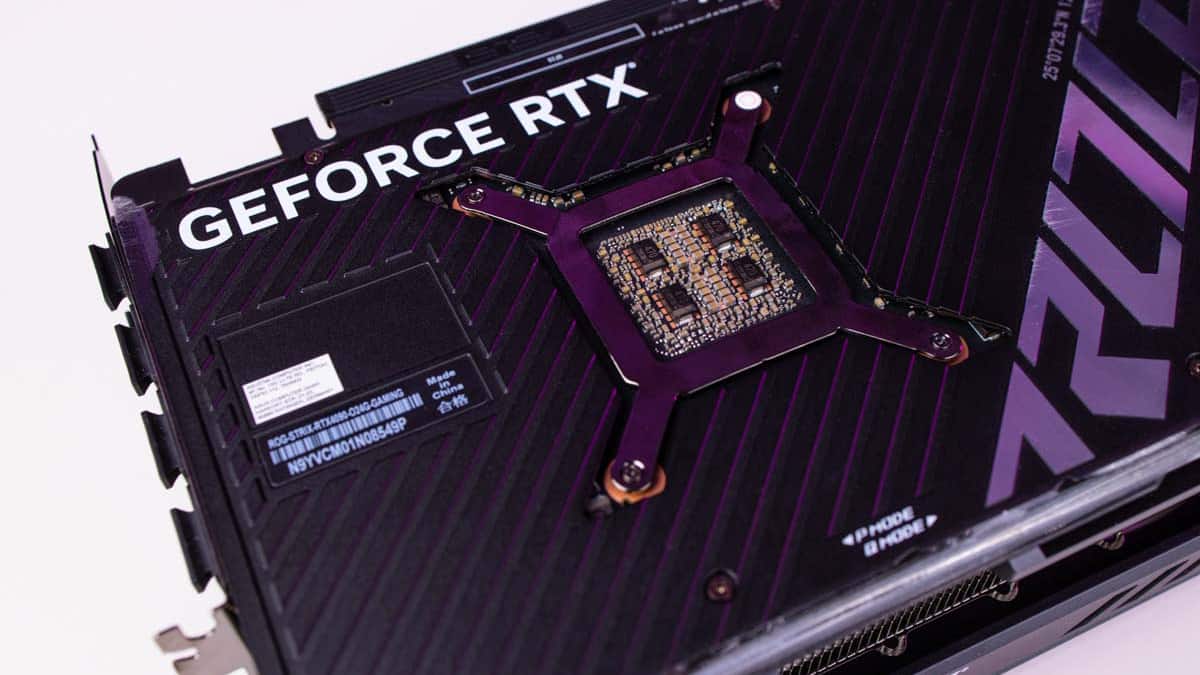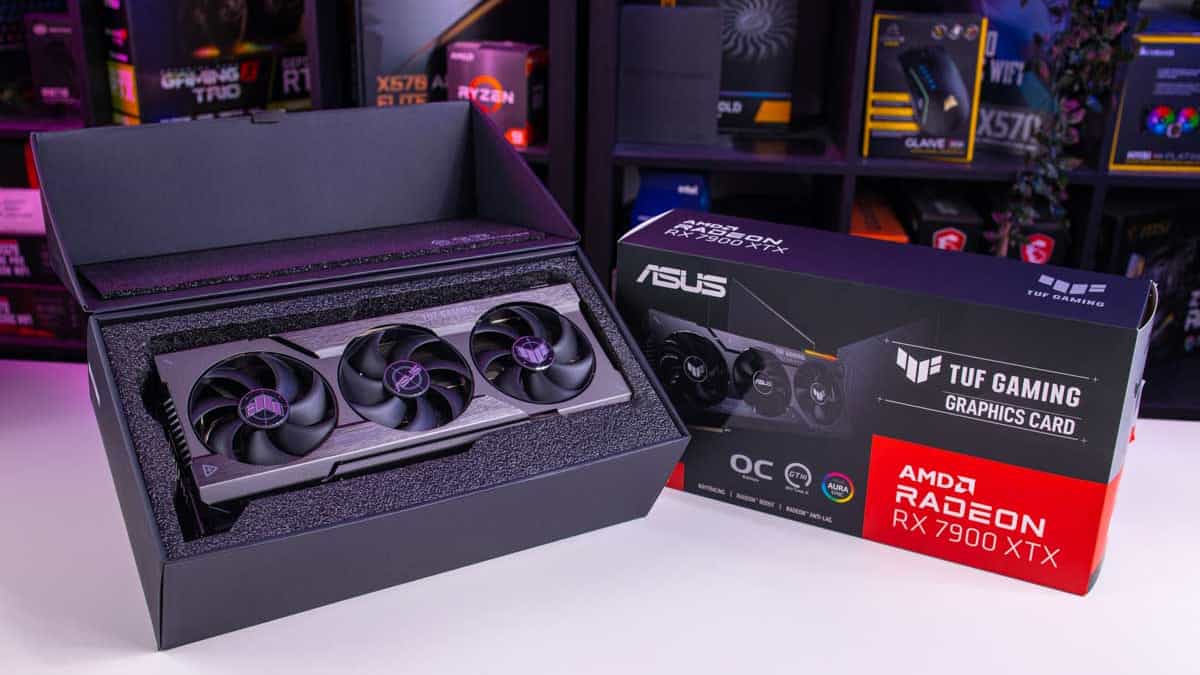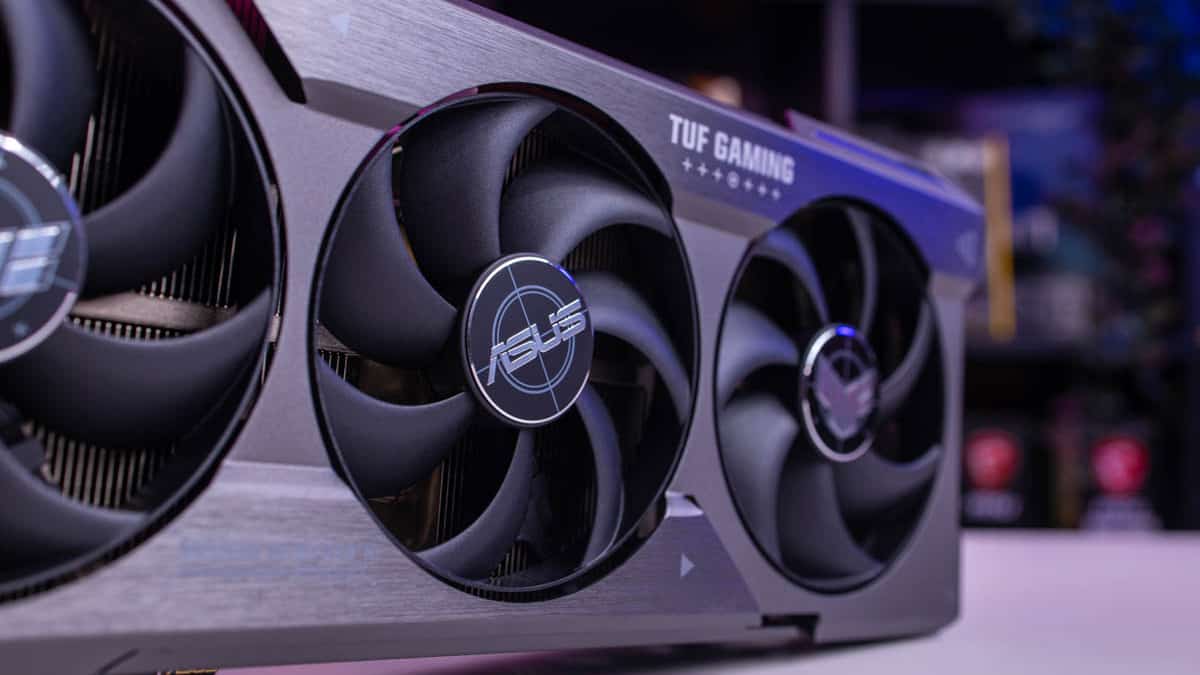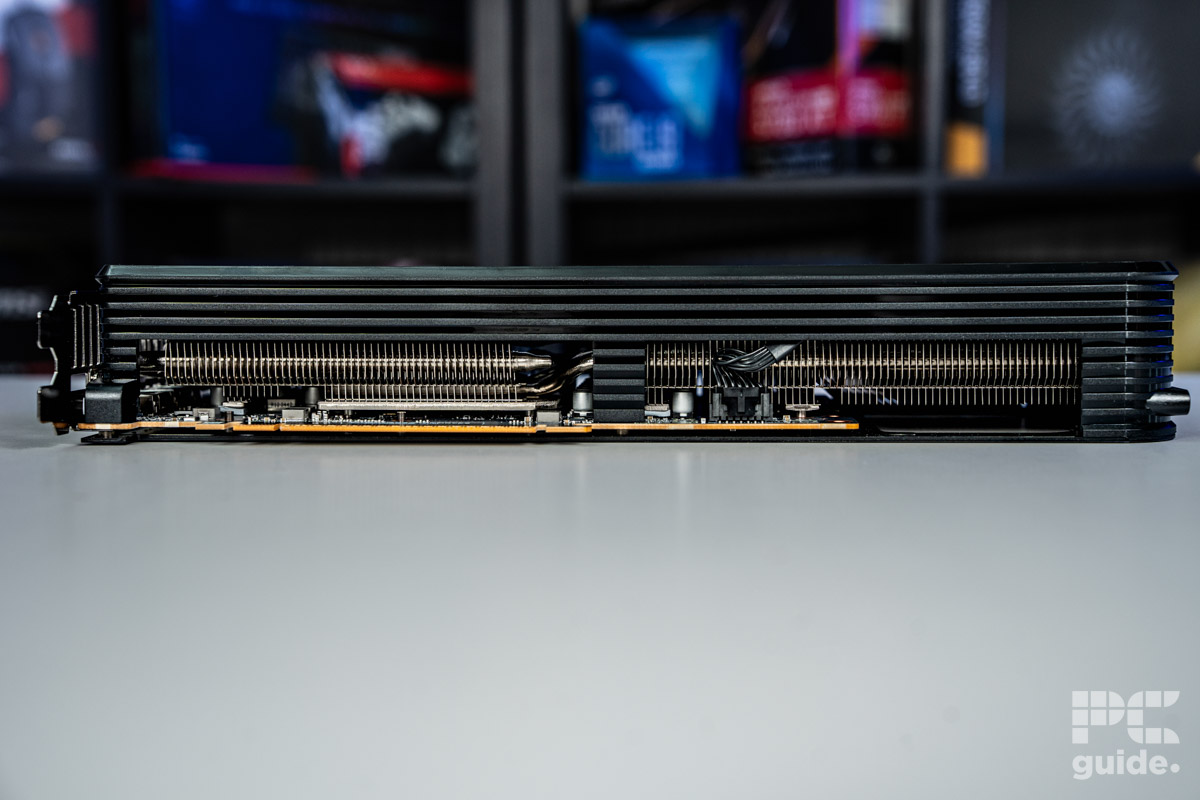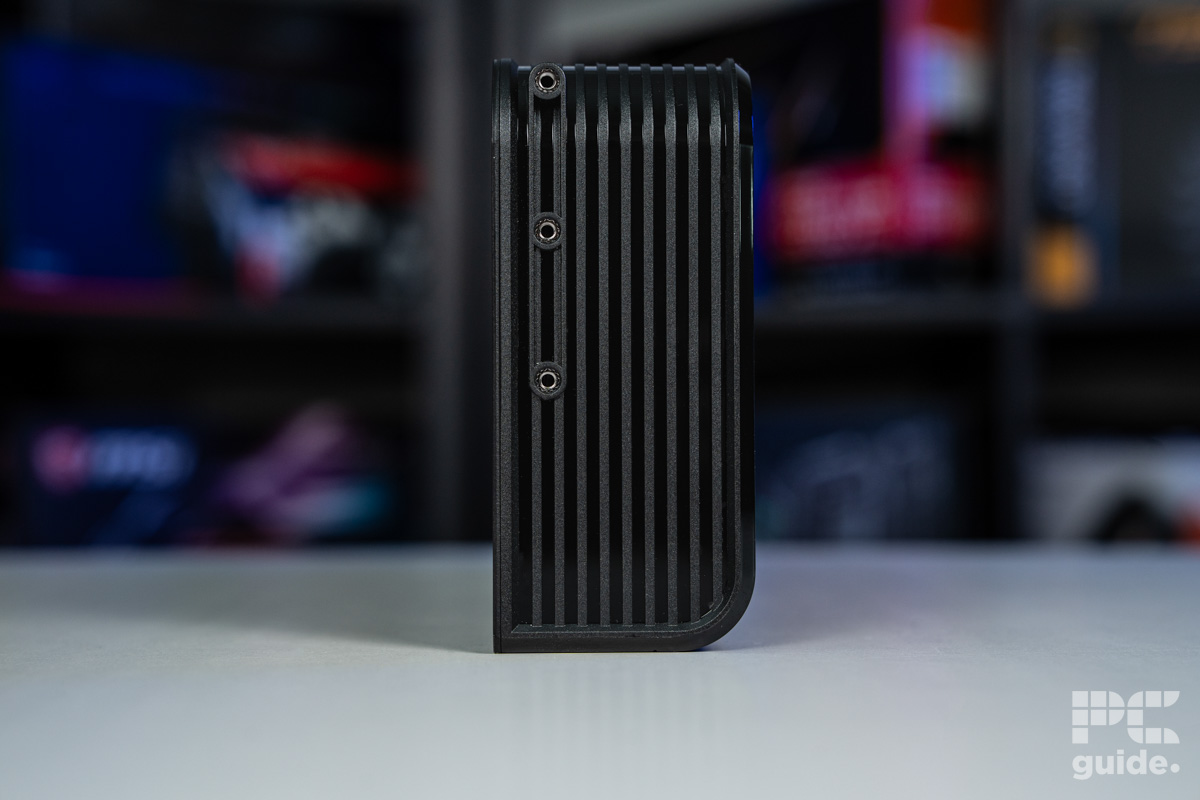Best GPUs for Ryzen 9 7900X & 7950X in 2025 – top options to pair with
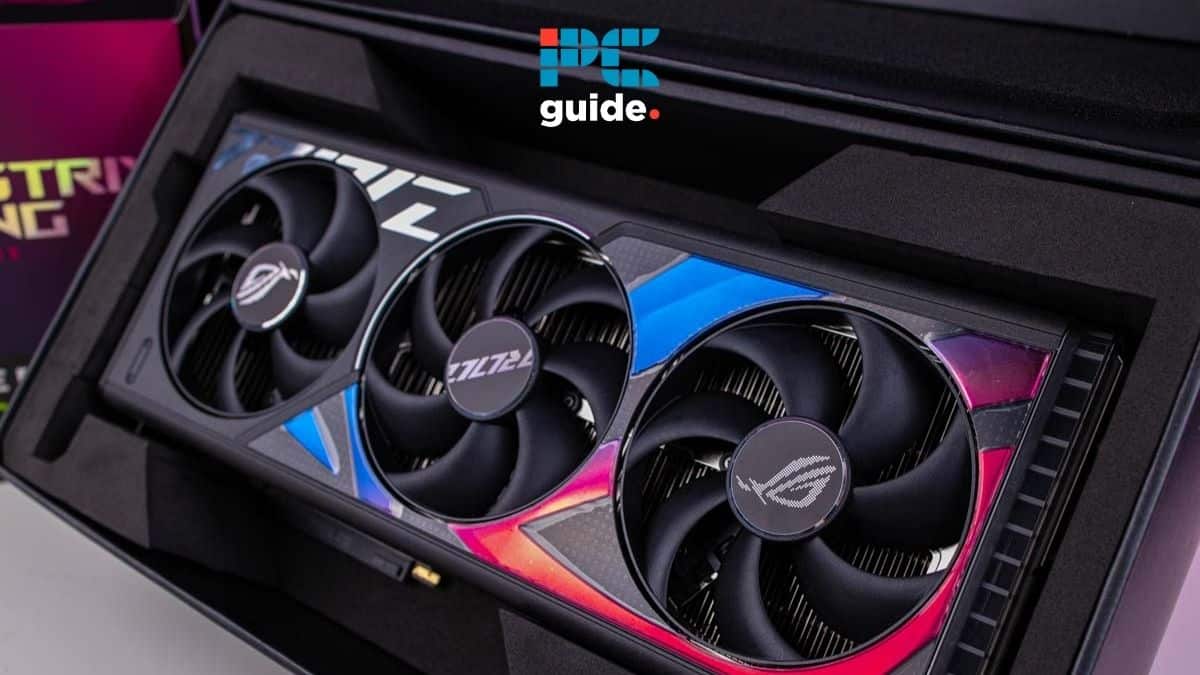
Table of Contents
While the Ryzen 9950X3D and 9900X3D may be taking the spotlight, the Ryzen 9 7900X and the 7950X are still some of the highest-end CPUs from AMD’s Ryzen 7000 series lineup, and fantastic for all types of high-performance PC builds. These are CPUs built for power users, overclockers, and anybody who has to use demanding apps and tools.
Since these CPUs are higher-end, you can pair them with some of the best graphics cards, however, it’s worth noting that the 50-series GPUs are quite difficult to find right now due to stock issues, making them an obvious choice, but not a realistic one for many.
Prime Day is finally here! Find all the biggest tech and PC deals below.
- Sapphire 11348-03-20G Pulse AMD Radeon™ RX 9070 XT Was $779 Now $739
- AMD Ryzen 7 7800X3D 8-Core, 16-Thread Desktop Processor Was $449 Now $341
- ASUS RTX™ 5060 OC Edition Graphics Card Was $379 Now $339
- LG 77-Inch Class OLED evo AI 4K C5 Series Smart TV Was $3,696 Now $2,796
- Intel® Core™ i7-14700K New Gaming Desktop Was $320.99 Now $274
- Lexar 2TB NM1090 w/HeatSink SSD PCIe Gen5x4 NVMe M.2 Was $281.97 Now $214.98
- Apple Watch Series 10 GPS + Cellular 42mm case Smartwatch Was $499.99 Now $379.99
- ASUS ROG Strix G16 (2025) 16" FHD, RTX 5060 gaming laptop Was $1,499.99 Now $1,274.99
- Apple iPad mini (A17 Pro): Apple Intelligence Was $499.99 Now $379.99
*Prices and savings subject to change. Click through to get the current prices.
We’ve tested loads of GPUs here at PC Guide in our testing lab, and we’ve selected the cards that we think will pair best with this processor. Heads up, the RX 9070 XT and RX 9070 should also be solid options too, so keep an eye out for those if you’re looking for something from AMD.
Products at a glance
-
Best GPU for Ryzen 9 7900X & 7950X
ASUS ROG Strix RTX 4090 OC
- GPU: AD102
- CUDA cores: 16,384
- VRAM: 24GB GDDR6X
- Memory bus: 384-bit
- Bandwidth: 1,008 GB/sec
- Base clock: 2235 MHz
-
Best AMD GPU for Ryzen 9 7900X & 7950X
ASUS TUF Gaming Radeon RX 7900 XTX OC
- GPU: Navi 31
- Stream Processors: 6,144
- VRAM: 24GB GDDR6
- Memory bus width: 384-bit
- Bandwidth: 960 GB/s
- Base clock speed: 1,929 MHz
-
Best mid-range GPU for Ryzen 9 7900X & 7950X
ASUS Prime RX 9070 XT OC
- GPU: Navi 48 XT
- Stream Processors: 4,096
- VRAM: 16GB GDDR6
- Memory Bus Width: 256-bit
- Base/Game/Boost clock speed: 1,660/2,400/2,970 MHz
- TBP: 304W
-
Best runner up GPU for Ryzen 9 7900X & 7950X
Gigabyte RTX 4080 Super Windforce V2
- GPU: AD103
- CUDA Cores: 10,240
- VRAM: 16GB GDDR6X
- Bandwidth: 736.3 GB/s
- Memory bus width: 256-bit
- Base clock speed: 2295 MHz
How we picked the best GPUs for Ryzen 9 7900x & 7950X
To make this list, we understand that the most fitting GPUs would be at the high end of the market, so we've considered some of the best GPUs around, with the likes of the RTX 4090, RX 7900 XT, and XTX. This is based on our first-hand knowledge of those cards, while we've also been hands-on with the Ryzen 9 7900X, so have first-hand experience of what these processors need to reach their respective potentials. If you don't yet have a motherboard, check out our best motherboards for Ryzen 9 7900X article.
We have considered a couple of additional options outside of the obvious ones, but we've opted for high-end overall because it makes little sense to pair a 7900X or 7950X with, say, an RTX 4060 or an RX 7600. Right, let's get into the best GPUs for the Ryzen 9 7900X and 7950X.
Our top picks


- GPU: AD102
- CUDA cores: 16,384
- VRAM: 24GB GDDR6X
- Memory bus: 384-bit
- Bandwidth: 1,008 GB/sec
- Base clock: 2235 MHz
- Blistering speed and fastest card available of the 40-series
- Offers 3rd-gen DLSS and ray tracing
- Excellent for content creation due to pure performance and throughput
- The most expensive card of the 40-series lineup
- High total power draw at around 450W
For the ultimate gaming and professional performance, we recommend opting for the RTX 4090. This GPU sits at the top of the RTX 4000 series’s performance hierarchy, which means it has a very hefty price tag. We’ve also tested and reviewed this card, and as our 4090 review shows, this card is designed for users who require the highest level of performance for demanding tasks such as 4K gaming, VR, and content creation – and these are jobs the Ryzen 9 79XX CPUs are also well suited to work towards.
This powerhouse boasts a boost core clock speed of 2,640 MHz, 16,384 CUDA cores, and 24GB of GDDR6X memory, all adding up to tremendous power for a perfect GPU partner for either the Ryzen 9 7900X or 7950X. This means that you can enjoy 4K gaming with maxed-out in-game settings and blaze through professional workflows like rendering or modeling with ease.
Beyond its extreme power, perhaps the most important aspect of this GPU – and the sole point where Nvidia stands off – is its ray tracing and DLSS technology. Although the rasterization power of an AMD GPU is unmatchable, Nvidia has made its best efforts to provide its client base with Deep Learning Super Sampling features that will come in handy for power users basing their PC use on machine learning or extreme levels of gaming.
The RTX 4090 doesn't come cheap by any stretch but there's no denying its capabilities for true 4K gaming and creativity that nothing else on the market can match.
PC Guide
The variant we reviewed is the ASUS ROG Strix, and it measures 14 x 5.8 x 2.7 inches (LxWxH), making it a huge card. So, we recommend measuring the space inside your casing before buying it, as you don’t want to cramp up the space, which will lead to restricted airflow and the amount of heat this beast generates, which is a recipe for quick thermal throttling. To avoid this, check out the best PC case for the RTX 4090 and the best 140mm case fans to ensure adequate airflow.
Another important aspect of this card is the power it requires. ASUS recommends pairing it with a 1000W PSU, and if you’re interested in checking out some options, we’ve reviewed the Corsair HX1000i and the Corsair RM1000X Shift, both of which got a 4.5/5 rating from us.
Our GPU test bench consists of the Ryzen 9 7950X, and paired with that; we put this GPU through its paces by running multiple games on all resolutions. One of the most graphically demanding games, Cyberpunk 2077, ran at 168, 135, and 74 FPS on 1080p, 1440p, and 4K settings. However, enabling Ray Tracing at 4K saw the frames drop to 43 FPS, but with DLSS 3 turned on, it shot up to 133 FPS, which is nothing short of impressive.
Overall, this is an excellent card to pair with either the Ryzen 9 7900X or the 7950X for gaming or work. This combination can also easily handle workstation-level tasks without breaking a sweat, but the only downside is the cost. That being said, it should last you a good couple of years so it should make for a worthwhile investment.
What users say
According to Amazon reviews, this card can chew through anything you throw at it. One reviewer said: “Nvidia really blew the previous gen 3090Ti out of the water with this thing. With over 70% raw performance gain over the 3090Ti, the 4090 is the first card I’ve experienced that can actually deliver practical 4k gaming at max settings while maintaining acceptable FPS.”

- GPU: Navi 31
- Stream Processors: 6,144
- VRAM: 24GB GDDR6
- Memory bus width: 384-bit
- Bandwidth: 960 GB/s
- Base clock speed: 1,929 MHz
- The fastest 7000 series AMD GPU to pair with the fastest concurrent AMD CPUs
- Excellent power efficiency with max draw of 355W
- Can handle VR, 4K, and content creation tasks
- Supports AV1 and DisplayPort 2.1
- Lacks Nvidia’s features, including DLSS
- Cannot match the power of the RTX 4090 and lags behind 4080 Super
One of the best things about AMD is the price. With the 7900 XTX, you'll have a top-of-the-line GPU capable of delivering incredible performance at a more reasonable price than the 4090. Another advantage of the 7900 XTX is its rasterization power.
The Sapphire RX 7900 XTX is considered one of the best models of the best AMD GPU on the market, and we've rated it 4.5 out of 5, too. With a base clock speed of 1,895 MHz, a shader and game clock speed of 2,395 MHz, and a boost clock speed of 2,565 MHz, this 7900XTX provides a high level of performance. The 6,144 stream processors and 24GB of GDDR6 memory make it a suitable choice for demanding applications and games, which is what you'll want if you're opting for either the Ryzen 9 7900X or 7950X.
If you're in the market for a high-performance video card for 4K gaming then AMD's RDNA 3 flagship delivers in spades and can confidently be considered among the best GPUs in 2025.
PC Guide
In addition, the GPU's dimensions of 352.9 x 158.2 x 72.6mm make it compatible with many PC cases, and the required 850W power supply ensures a more affordable build. The TBP (max power draw) of 355W is reasonable, given the GPU's performance capabilities, and it allows for a balanced trade-off between performance and energy efficiency. So, if you’re interested in exploring some PSU options, we recommend checking out the Corsair RM850x Shift White PSU, which we’ve reviewed.
To draw a comparison between the RX 7900 XTX and the RTX 4090, we’ll take the performance in Cyberpunk 2077 as an example. The RX 7900 XTX churned out 70 FPS at 4K and 137 FPS at 1440p, while the RTX 4090 has 74 and 135 FPS, respectively. This isn’t a huge difference but these cards vary a lot when it comes to price.
So, the question is: Is it worth it to pay so much extra for four extra FPS at 4K and better Ray Tracing? Well, if you want raw 4K performance at a lower price, the RX 7900 XTX is the perfect GPU, but for enthusiasts who want the best visuals, Nvidia’s Ray Tracing performance is much better.
That being said, considering the specs, this GPU is ideal for users who want a high-performance GPU that can handle demanding tasks, such as 4K gaming, VR, and content creation. The higher power requirements and TBP should be taken into consideration when building a system around this GPU, but it's not as demanding as the 4090.
What users say
According to Amazon reviews, this graphics card has excellent performance and value for money. One user said: “If you are gonna get high end graphics card, I personally believe this is the best value you can get. It offers remarkable 1440p and 4K performance with blazing fast frame rates with room to spare. Additionally, now that FSR3 is slowly rolling out and Fluid Motion Frames are available in the driver software, this makes the competition look less tempting.”

- GPU: Navi 48 XT
- Stream Processors: 4,096
- VRAM: 16GB GDDR6
- Memory Bus Width: 256-bit
- Base/Game/Boost clock speed: 1,660/2,400/2,970 MHz
- TBP: 304W
- Great performance even at 4K and reaching RTX 4080 levels
- Excellent MSRP makes it much more appealing against competition
- Incredible improvements over the previous generation
- Plenty of VRAM for the price
- Still falls behind in ray tracing, AI, and creative workloads
- Spiking and high power draw
- Features not as extensive as Nvidia
If you’re looking for a graphics card that would pair well with the Ryzen 9 7900X and 7950X while maintaining good value for money, we recommed you check out the RX 9070 XT. This is the new heavy hitter from AMD and it seriously impressed us when we tested it for our RX 9070 XT OC review.
This graphics card features 16GB of GDDR6 VRAM with a 256-bit memory interface width and has a memory bandwidth off 640 GB/s. While this might not seem as impressive compared to Nvidia alternative, the real magic is happening in the cores which are based on the RDNA 4 architecture, which is significantly better than RDNA 3.
It has 4,096 Stream Processors which can run at a maximum of 2,970 MHz, meaning it can handle 2.9 billion instructions per clock cycle and all that requires is 304W of power. However, during our stress testing, we saw that it easily ramped up to 360W, which is well way above 304W and even spiked to 500W but that was only momentarily. Despite that, the 2 x 8=-pin power connector could easily hold up and we saw no signs of burning or melting.
AMD has even made great strides in AI and ray tracing performance, closing the gap to Nvidia and what it is capable of. Even though it's not all there, it definitely makes it a more rounded option than either the previous generation.
PC Guide
The design of this GPU is also excellent as it remained at 54°C while the memory junction did reach 90°C but that had no impact on it’s performance. To test its gaming and synthetic output, we paired it with the Ryzen 7 9800X3D. To give you an idea, the multi-threaded output of the 7900X and 7950X is much better than the 9800X3D but the latter takes the lead in single-core performance and hence delivers better gaming results.
The ASUS Prime RX 9070 XT OC was easily able to hit 4K in all the games that we tested such as F1 24, Cyberpunk 2077, Indiana Jones and The Great Circle, and more. In these titles, we got 75, 61, and 101 FPS, respectively. Besides that, it could also trade blows with the RTX 5080, which is a high-end GPU in 4K as well as 1080p and 1440p.
For example, the RTX 5080 churned out 171 FPS in F1 24 at FHD while the 9070 XT delivered 177 FPS. In the same title at 1440p, the we got 136 and 131 FPS, respectively, which means that depending on the title and resolution, these graphics cards can compete but for the most part, the 5080 will pull ahead.
However, the main takeway is that a card that costs significantly less can match its output and this is a huge win for Team Red. That being said, it also had excellent performance in 3DMark and specifically Port Royal, which tests a graphics card’s ray tracing output. The 9070 XT churned out 18,086 points while the RTX 5070 OC trailed behind with 14,379 points.
Overall, the combination of the 7900X or the 7950X with the RX 9070 XT should deliver excellent results whether you’re gaming or working.

- GPU: AD103
- CUDA Cores: 10,240
- VRAM: 16GB GDDR6X
- Bandwidth: 736.3 GB/s
- Memory bus width: 256-bit
- Base clock speed: 2295 MHz
- Excellent performance and step beyoind the 4080
- Designed to deliver brilliant 4K gaming
- Improved value vs the RTX 4080 with the same MSRP
- Still fairly pricey as a 40-series card vs AMD options
- Triple-slot card, so ample case space is required
For those looking for good Ray Tracing performance but don’t want to spend a bunch of money on the RTX 4090, the RTX 4080 Super is a close second. In our RTX 4080 Super review, it showcased excellent gaming performance at 4K and handled the synthetic benchmarks without breaking a sweat.
Due to the ray tracing, DLSS, and the faster memory of Nvidia, both new-gen AMD cards initially chose the 4080 as the main competition. Team Red knew that the 4090 was untouchable, so it focused its sights a little lower. Then, the RTX 4080 Super came out and pushed things a little further, leading to AMD's dropping of prices to more directly compete with Nvidia's mid-tier.
While the RX 7900 XTX is still good value competition for the 4080 Super, the latter is simply the second fastest GPU of the 40-series and RX 7000 series era—only behind the RTX 4090. So, if you're looking for super potential performance from a PC with the Ryzen 9 7900X or 7950X, then—based on raw performance numbers—this is the second-best card to opt for.
The RTX 4080 Super confidently replaces any reason to ever go out and buy the base RTX 4080
PC Guide
There are downsides, of course. Price is the key one, but it's also large, with standard dimensions of 310 mm x 140 mm x 61 mm, making it at least a triple-slot card. But those are the sorts of trade-offs that exist with a card that has a base clock speed of 2295 MHz, a boost clock of 2550 MHz, and ships with 10,240 CUDA cores. Undoubtedly one of the best GPUs for the Ryzen 9 7900X or 7950X, but not for everyone.
Regarding its gaming performance, we ran Assassin’s Creed Mirage and Avatar: Frontiers of Pandora and got 139 and 119 FPS at 1440 and 95 FPS in both titles at 4K. However, in Cyberpunk 2077, we got 125 FPS at 2K and 51 FPS at 4K, natively. So, while it was close to 60 FPS in raw performance, DLSS 3 should make this output much better. So, not only is this card capable of pushing 4K natively, but it also does so with ease. The only downside to it is still a hefty price tag, and the 7900 XTX offers better 4K results in the same price range.
What users say
According to Amazon reviews, this GPU has a good thermal design and offers great performance. One reviewer said: “The Gigabyte 4080 super doesn't disappoint! I have this in a Cooler Master NR200, and the cooling performance has been great. Fans have a good balanced profile and are not loud. Additionally I haven't noticed any coil whine. The performance of this card meets expectations.”
How to choose the best GPU for Ryzen 9 7900X and 7950X
Just because the Ryzen 9 7900X and the 7950X are flagship processors doesn’t mean that you have to spend top dollar on high-end graphics cards. There are a couple of factors that you need to keep in mind before making a purchase, and we’ve listed a couple of them to help you make an informed decision.
Budget
The first aspect you need to consider is your budget and the options available within that price range. The 7900X and the 7950X are high-end processors, so it makes sense to pair them with flagship GPUs from Nvidia or AMD; however, those options cost a lot.
So, it is best to filter the options based on your budget and then select one card that offers the best performance and value. This will ensure that you don’t overspend but also end up with a good combination.
Power requirements
The best GPU will give you the most performance for your money while also requiring power you're prepared to provide for it. Good power efficiency not only saves you money on electricity bills but also ensures a smoother experience with less noise from the GPU. A more power-efficient GPU will provide better performance and make less noise. However, if you want top performance, you may need to compromise. For example, to run an RTX 4090, you'll want a 1000W PSU…which can add to costs.
Is 7900X good for productivity?
The Ryzen 9 7900X is one of the best processors for productivity as it is a high-end processor and can handle resource-intensive multi-threaded applications and tasks with ease. This can be video editing, encoding, decoding, image processing, and more.






